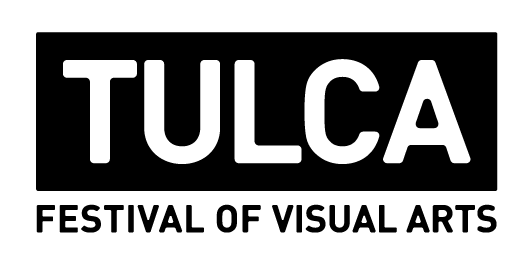Miriam de Búrca
Installed across the ground floor galleries of the Galway Arts Centre is a new body of work in painting and drawing by Galway-based artist Miriam de Búrca. This work focuses on unmarked burial sites across Ireland called cilliní which were used to bury unbaptised babies and other souls considered ‘unsuitable’ for consecrated ground. Unmarried mothers, the mentally ill, queer people, unknown strangers, disabled children (or changelings, as they were known), and excommunicates were all laid to rest here, exiled to a state of eternal limbo.
The sites that held these souls were shaped by a church that outlawed their remembrance; their locations and inconspicuous, unremarkable topography aimed to deflect attention, to disappear them.
With this in mind, de Búrca proposes that a cillín is not a landscape; it is negative space, a blind spot in our psyche, a site of oblivion. In her practice, she works to make these spaces visible in different ways. One method she employs sees her select samples of plant life that grow from these grounds, and make detailed drawing studies of this flora as a way of interrogating the land and the charge that it holds.
“Despite being all but eliminated from the national consciousness, cillíní are omnipresent — they are part of the land we walk on (often without realising), they are the holes in our inherited memory and in the moral and social values of contemporary Ireland. I want to rematerialise them; bring them back from the projection of nothing-and nobodiness that led to their formation in the first place.
Drawing attention to cillíní disassembles what drove their function, namely to ensure that they and their interred do not make a connection or speak to the living, neither physically nor in memory. I see their representation as an act of reaching out and making them tangible again.”
Miriam de Búrca was born in Munich, Germany and grew up in the west of Ireland. She studied Fine Art at Glasgow School of Art and the University of Ulster, Belfast and in 2010 was given an Award of Excellence for her practice-based PhD at the University of Ulster. Her drawings and experimental film and video-works have been exhibited internationally, selected exhibitions include: Moving Spaces, Glucksman Gallery, Cork (2019); Radical Drawing, Herbert Art Gallery & Museum, Coventry (2019); Fragile Earth: Seeds, Weeds, Plastic Crust, MIMA, Middlesbrough (2019), Protest and Remembrance, Cristea Roberts Gallery, London (2019); Getting Used to the Dark, National University of Ireland, Galway (2018); Vanishing Futures, Golden Thread Gallery, Belfast, (2015); Drawn to the Real, Cristea Roberts Gallery, London (2014); Landscapes on Film, Irish Film Institute, Dublin (2011); my home is his castle, solo show, Catalyst Arts, Belfast (2011); Pencil to the Plough, Cross Gallery, Dublin (2011); Spatial Relations, screening, Centrum/ Waffelfisch, Berlin (2010); Holding Together, Douglas Hyde Gallery, Dublin (2010); Elected Perspective, Galeria Arsenale, Białystok, Poland (2010); AWingBigCell, installation, Spencer Brownstone Gallery, New York (2008); Don’t Play My Game Again Ever, installation, Gimpel Fils, London (2008); Passengers 2, screening and talk, In Situ, Warsaw, Poland (2008); Northern Bound, screening, Vidéographe, Montreal, Canada (2007); Lighthouse, Old Truman Brewery, London (2007). De Búrca is represented by the Cristea Roberts Gallery, London and has works in the collection of the Arts Council of Northern Ireland; The British Museum, Mead Gallery, University of Warwick, Coventry; National University of Ireland Galway; Glucksman Gallery, University College Cork, as well as several private collections. Her drawing has recently been published in Phaidon’s series, Vitamin D3: Today’s Best in Contemporary Drawing and will be featured in Irish Art 1920–2020: Perspectives on a Century of Change, eds. Yvonne Scott and Catherine Marshall, 2021.
Miriam de Búrca lives and works in Galway, Ireland.
Image: Here, there, anywhere. 2021. Pencil and Indian ink on wall. Photo; Ros Kavanagh


